#archipelago island resulting
Text
Dungeon Meshi World Map
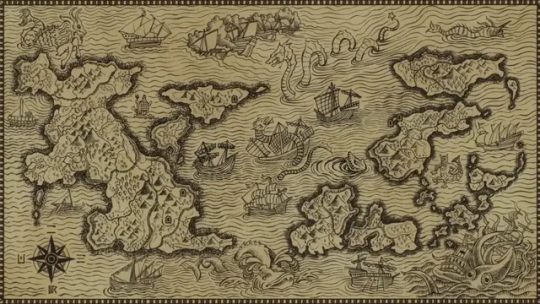
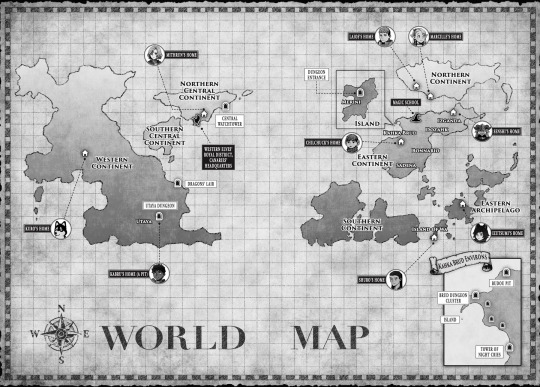
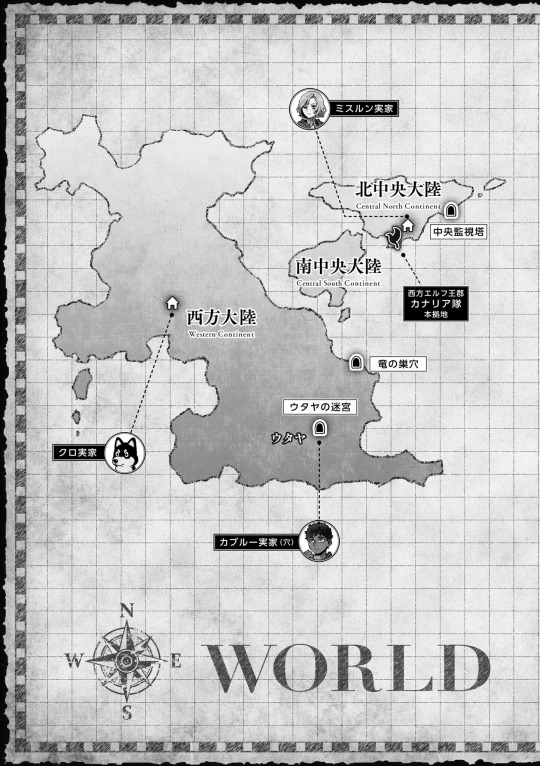
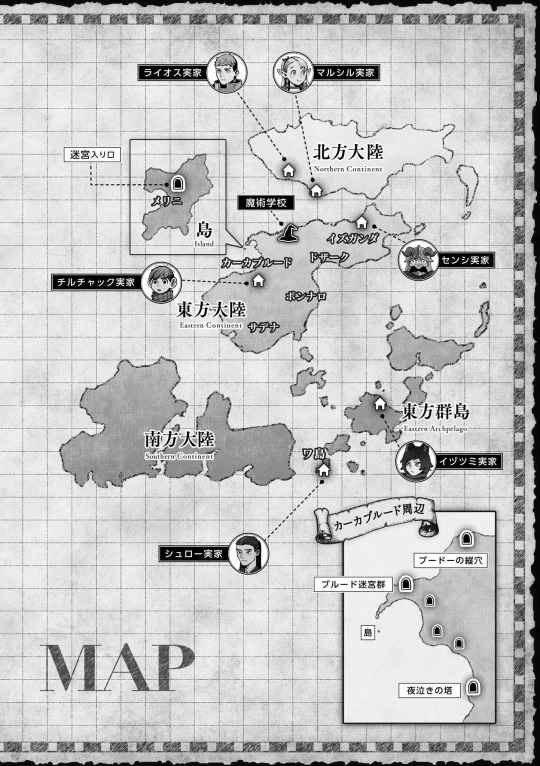
REGIONS (Descriptions taken from the Adventurer's Bible)
WESTERN CONTINENT
Description: Bears the most scars from the ancient war. It has many monsters and ruined dungeons, and although it's vast, there are surprisingly few habitable areas. Most of the inhabitants are sturdy, short-lived races and demihumans. Elven culture has had a strong influence here.
Characters: Kabru and Kuro
Places of Note: Utaya
Dungeons of Note: The Utaya Dungeon, The Dragon's Lair
NORTHERN CENTRAL CONTINENT
Description: The continent that is home to the largest nation, ruled by the queen of the elves. The term "Western Elves" mostly indicates elves from this region. It's the safest area and life is easy here, but its shrinking population has dangerously weakened it.
Characters: Mithrun (and the Canaries)
Places of Note: Western Elves's Royal District, Canarie's Headquarters.
Dungeons of Note: Central Watchtower
SOUTHERN CENTRAL CONTINENT
Description: The area with the second-largest elf nation. It has more inbound immigration than the Northern Central Continent and a rather disorganized atmosphere. While it's in an alliance with the Northern Central Continent, they really aren't on good terms.
Characters: -
Places of Note: -
Dungeons of Note: -
EASTERN CONTINENT
Description: Home to the largest gnome nation. Once dwarfs and
gnomes made up the majority of the inhabitants, but in recent years there has been an influx of short-lived races from the Northern Continent and Eastern Archipelago, and the population is growing rapidly. It's a melting pot where various cultures are jumbled together.
Characters: Chilchuck Tims (Kahka Brud), Senshi (Izganda)
Places of Note: Magic School, The Island/Melini, Kahka Brud, Izganda, Dozahk, Bonnario, Sadena
Dungeons of Note: Island, Brud Dungeon Cluster, Budou Pit, Tower of Night Cries
NORTHERN CONTINENT
Description: A severely cold continent where over half of the land is covered in perpetual snow. The majority of the inhabitants are short-lived races, particularly tall-men, but the population isn't large to begin with. It has been strongly influenced by dwarf culture.
Characters: Laios & Falin, Marcille
Places of Note: -
Dungeons of Note: -
EASTERN ARCHIPELAGO
Description: An area where short-lived races live. As a result of a pact, there has been no interference by long-lived races for a very long time. The effects of the ancient war are slight, and they have almost no trouble with monsters or dungeons, but there's constant strife among humans.
Characters: (all from different Islands) Izutsumi, Shuro and his Retainers, Rinsha Fana (Not shown)
Places of Note: Island of Wa
Dungeons of Note: -
SOUTHERN CONTINENT
Description: Home to the largest dwarf city. Gnome and dwarf nations often build down rather than out, and the innermost layers are extraordinarily deep. War still erupts frequently, and there are never-ending disputes near the borders.
Characters: -
Places of Note: -
Dungeons of Note: -
If you're interested I've found a post on pixiv with the map outlines and some more info (in japanese)
I'll make a post about the dungeon descriptions later but here they are, there's a little more info about Kahka Brud dungeons on my last map post
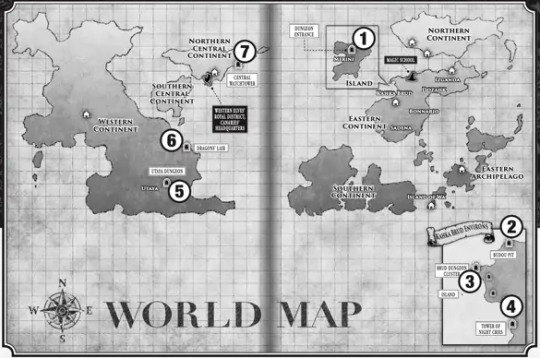
1 The Island, 2 Budou Pit, 3 The Brud Dungeon Cluster, 4 The tower of Night Cries 5 The Utaya Dungeon 6 The Dragon's Lair 7 The Central Watchtower
Map Outline
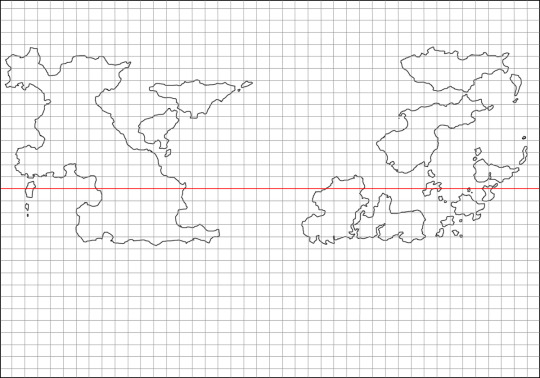
#dungeon meshi#dungeon meshi map#adventurers bible#maps#world map#Laios Touden#Marcille Donato#Senshi of Izganda#Chilchuck tims#Izutsumi#Toshiro Nakamoto#Kuro#Kabru of utaya#Utaya#The canaries#Mithrun#Edit: Shame on me I forgot to add one more map and a link to a pixiv post with the outlines#longpost#long post#worldbuilding#world building#fantasy map#fantasy world#for referencing
724 notes
·
View notes
Text
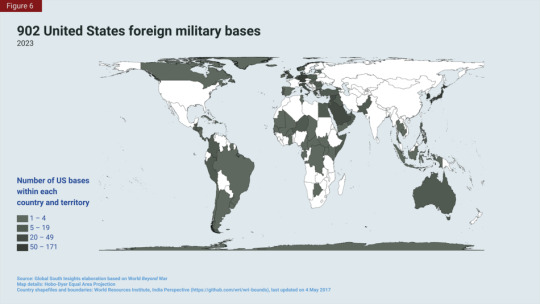
"In the twenty-first century, nothing is more indicative of U.S. empire than the global reach of the U.S. military. Much of this power comes from its approximately 800 military bases located in around eighty countries, accounting for about 95 percent of the world’s foreign military bases. No other country comes close to the U.S. level of worldwide military control. ... The United States probably has more military bases than any other empire in history, yet most Americans remain largely ignorant of their numbers and location. The history of these bases is an imperial history, tied to war, occupation, and military expansion. Wherever the U.S. military has gone bases have usually followed, giving the United States an ongoing presence long after the war or occupation is over.
The creation of bases has accompanied each wave of U.S. expansion. Military forts enabled continental conquest—255 in total—which functioned as foreign bases on land that was often still controlled by Native peoples. These forts operated as the military outposts of settler-colonialism and were targeted by Native peoples as violations of territorial integrity. The War of 1898 and subsequent occupation of overseas colonies resulted in a global basing system, and by 1938 the United States had fourteen military bases outside its continental borders in Puerto Rico, Cuba, Panama, the Virgin Islands, Hawaii, Midway, Wake, Guam, the Philippines, Shanghai, the Aleutians, American Samoa, and Johnston Island. ... The explosion of foreign bases during World War II would be followed by surges during the Korean War, the War in Vietnam, and the Wars in Afghanistan and Iraq, showing that wars and occupations continue to expand U.S. territory, even if the form of those acquisitions has shifted since the days of settler-colonialism and annexation. The contemporary number, which hovers around 800 to 900, is still an impressive network that places the military within striking distance of every spot on the globe. Historian Bruce Cumings calls the modern form of U.S. empire an 'archipelago empire,' small islands of U.S. control from which power can be projected anywhere in the world. It has become increasingly difficult to tell where the boundaries of the United States begin and where they end.
... For most U.S. citizens these bases are either invisible or accepted as a natural part of our national security apparatus. David Vine argues that Americans 'consider the situation normal and accept that US military installations exist in staggering numbers in other countries, on other peoples’ land. On the other hand, the idea that there would be foreign bases on US soil is unthinkable.'"
Stefan Aune, "American Empire," in At War: The Military and American Culture in the Twentieth Century and Beyond, 2018
Map source
650 notes
·
View notes
Text
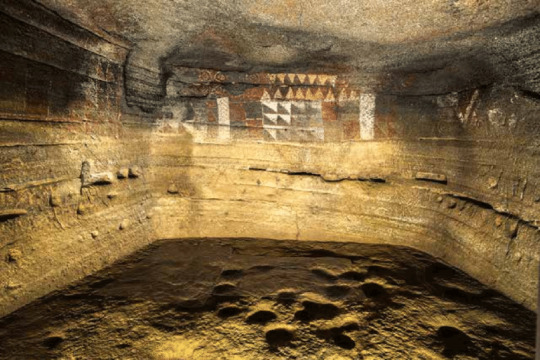

The prehistoric Cueva Pintada (Painted Cave) located on the island of Grand Canary in the Canary Islands archipelago. The cave was discovered by accident in 1862 during agricultural digging work. When it was first found, it contained skeletons, pottery and other utensils. The paintings themselves consist of precisely delineated geometrical patterns painted in ochre, a pigment derived from minerals. Archaeologists think that, due to their regular distribution (usually in series of twelve), they could be a sort of calendar. They were created by the Canarii, the indigenous inhabitants of the island prior to the Spanish invasion in the 15th century. The Canarii (also known as the Guanche) were of North African origins, and genetic testing of their mummies found they were closely related to Moroccans, Berbers and Spaniards.
The first carbon-14 analysis made on the cave was on the wall paintings. This gave no results because the paint used carried no trace of carbon, being entirely non-organic. Some vegetal remains of a plant from the family Lauraceae were found in the mortar in the walls. These remains were dated between 1049 and 1257 BCE. Some fragments of pine wood were dated between 601 and 994 CE.
69 notes
·
View notes
Photo
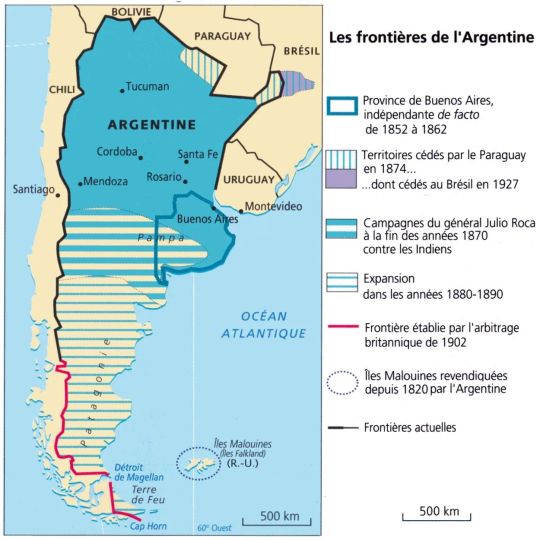
Argentina's borders
« Atlas des peuples d’Amérique », Jean Sellier, La Découverte, 2006
by cartesdhistoire
In 1853, Argentina adopted a constitution modeled after that of the United States, which combined federalism with presidential governance. However, Buenos Aires did not ratify this constitution and seceded until 1862. It did not become the federal capital until 1880, following its separation from the province.
In the northern regions, territorial expansion was fueled by the War of the Triple Alliance (involving Brazil, Argentina, and Uruguay) against Paraguay between 1864 and 1870. Argentina occupied Misiones (located between the Paraná and Uruguay rivers) in 1868, as well as part of the Chaco (which is now the Argentine province of Formosa).
In the southern territories, expansion occurred at the expense of indigenous peoples who had never been subjugated by the Spaniards and who regularly raided the pampas (the provinces of Buenos Aires and Santa Fe). In 1878–1879, General Julio Roca decisively ended these raids by destroying both the summer camps and winter settlements of the indigenous peoples. This "conquest of the desert" led to the incorporation of 650,000 km² of arable land.
In Patagonia, resistance was not primarily from indigenous peoples, who were few in number, but rather from Chilean territorial ambitions. In 1884, Argentina established a foothold in Ushuaïa (Tierra del Fuego). A British arbitration took place in 1902, resulting in Argentina securing the Atlantic side and Chile obtaining control over the Pacific side.
In the South Atlantic, the Falkland Islands archipelago (which received its name from sailors from Saint-Malo) was uninhabited until 1764 when both the French and English undertook colonization efforts. The French departed the archipelago in 1770, followed by the English in 1774. However, after Argentina established a garrison there in 1820, the English protested, expelled the Argentines in 1832, and declared the islands a crown colony in 1833. By 1900, the archipelago had 2000 inhabitants of British origin. In April 1982, the Argentine armed forces attempted to seize the Falklands, but the English compelled them to surrender in June of the same year.
64 notes
·
View notes
Text
Okay so vampire AU!
The world had a war that resulted in vampires being subjected to a lot of shitty stuff. They have the basic negative stereotypes and the one place that vampires actually rule is a lawless wasteland where all humans die. Most places kill or do not allow vampires to reside there, but Quesadilla Island does, albeit for shady reasons.
Vampires are allowed to live in Quesadilla Island relatively peacefully, however they must stay at one of three group homes. I imagine BBH, Philza, and Foolish each running one. BBH runs one in the far north where it’s cold and rainy most the year, Foolish in the south of the archipelago where it’s warm and daywalking is more common, and Philza somewhere in the middle, maybe he’s the only one who owns a group home in the city.
Foolish, BBH, and Philza are all 2nd generation vampires which means they were sired by the “original vampires”. No original vampire still survives which makes the few remaining 2nd generation ones the strongest around making them ideal to run group homes. BBH, Foolish, and Philza are all reasonable and kindhearted in their own ways, which make them ideal to run group homes. Their power also makes them ideal to have under control.
I haven’t quite divided up who would live under which group home but I think vaguely it would follow purgatory grouping, though I imagine tina with foolish and bagi with bbh so maybe not. Tubbo is a human who got forced to live at BBH’s home for reasons I haven’t fully fleshed out. Bad and the vampires are surprised. Tubbo is scared at first but they all adapt.
That’s basically the bones of my AU. It’s so far completely been in my head so the details are jumbled.
Some plot lines I’ve had are that BBH and Foolish were sired by the same vampire so they were both under his control at the same time. This led to them somewhat trauma bonding. Philza is somewhat of a mentor to bbh and foolish being older than them by a few hundred years. BBh is older than foolish by about 50 and holds it over his head all the time.
BBH takes in a lot of children who got turned and abandoned, Dapper being one of them. Cellbit was sired by BBH and went on to later sire his husband Roier himself. They both used to stay in Philza’s coven but were forcibly removed and sent to bbh and foolish separately after an incident. They’re both depressed.
Tina and Bagi are also separated, but they didn’t do anything so there’s conspiracy that the federation wont tolerate vampire couples or something.
Pac is a newly turned vampire. He lives in a anti vampire city with Mike who is his sole source of food. Pac begins to hunt after Mike gets more and more anemic. Fit is a handsome vampire hunter that visits the 24/7 diner that pac works the night shift at. Fit was in an awful accident where he and his family ended up in the vampire lands. Fit was the sole survivor and really buys into anti vampire propaganda. One night he gets a call reporting a vampire and finds the cute waiter that’s been working the night shift at his favorite diner. He freezes and lets Pac escape. This leads to him questioning all of his beliefs and when he finds Ramon, a child vampire a week later that he can’t kill, he knows there’s only one person he can turn to for help.
#Vampire Au#badboyhalo#qsmp#qsmp badboyhalo#cellbit#qsmp cellbit#qsmp fitmc#pactw#qsmp tubbo#tubbo#philza#foolish gamers
37 notes
·
View notes
Text
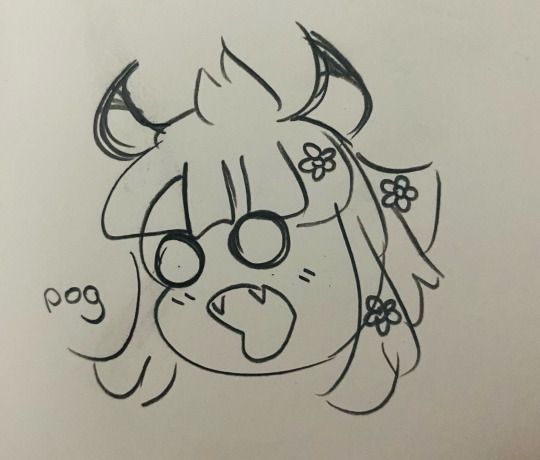
some notes on Taranza & Joronia’s species, and on Floralian culture:
🌸 Colloquially speaking, both bug-folk (Waspiders, Antlers, Sectra Dees, etc.) and plant-folk (the People of the Sky) are indigenous to Floralia, having lived there for thousands of years.
🌸 The floating archipelago’s Mirror Counterpart is the kingdom of Sporalia - an underground civilization deep beneath the earth, within and around Cabbage Cavern.
🌸 Floralian Waspiders are arboreal, whereas Sporalian Waspiders are fossorial. As a result, the latter tend to have thicker claws and larger horns, which they use for digging.
🌸 Both can hold their breath for significantly longer than, say, the average Waddle Dee - an advantage in dizzyingly high-altitude floating islands and waterlogged underground caverns alike.
🌸 Waspiders are omnivorous. Although their diet is particularly heavy on insects, meat and fish, they’ll also consume plants, fruit, flowers and flower nectar. Plant milk is popular, as are fruit juices and liquors, pulque, and cacao-based drinks.
🌸 Insects and other forms of prey are usually cooked, but consumption of raw or live prey isn’t unusual, either - the late Queen Joronia was particularly known for her fondness of raw shrew, sliced thin and marinated with fresh herbs, citrus and birch syrup.
🌸 Snakes are sacred animals and symbols of protection to Floralians, made in the image of their serpentine deity, Togu Ro Garāga (whom you may know as Coily Rattler). Killing, eating or otherwise bringing harm to a snake is taboo.
🌸 Statues and other iconography of serpents are often erected outside tombs, temples, homes, and so on - some, like the Burner Guardians, are even animated with magic to defend against intruders.
🌸 Floralia has a strong and elaborate tea culture - or rather, tisane culture! (Taranza is anal about the difference, but enjoys both.) Most Floralian teas are brewed from flowers and herbs rather than tea leaves, which are an imported delicacy from the Lower World.
🌸 Flowering teas are quite popular, consisting of dried flower bundles that ‘bloom’ as the water heats up. For those who prefer sugar in their cup, teas (and tisanes) are typically sweetened with honey, agave or flower nectar.
49 notes
·
View notes
Text
TITANS
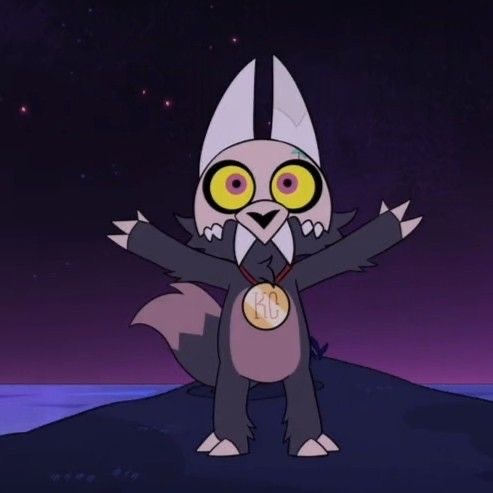
DESCRIPTION
Titans are magical beings that are responsible for modern life on the planet.
There are 3 types of titans.
Aerial - dragon-like titans with wings for gliding short distances and display. Their breath is molten metal.
Terrestrial - wolf-like titans with large muscle strength. They release a sonic boom from their jaws
Aquatic - mosasaur-like titans with front flippers and a powerful tail. They’ve developed a spine that mimics the appearance of coral to hide from predators and prey. They can inhale water at a speed fast enough to create massive whirlpools.
All titans share glyph magic, the ability to create life, and growth rate.
Of the three titan types, aerial and terrestrial titans share territory, while aquatic titans are more solitary and less abundant. Some titans have wings that are covered in vibrant patterns to display their importance, as these are often elders, royals, or generals. These wings cannot be used for flight and are more of a way to say ‘look at me, I’m important, respect me’.
The ‘skulls’ on their heads are not actually part of their skeleton - it is a piece of head armour that evolved from simple plates into a whole helmet
Titan societies are very open. There is a royal bloodline, but they are more laid back and less commanding. They value respect and bow before the earth. Titans follow a unique calendar and hold festivals for important events, including full moons, hatchings, marriage, and music. The most important tradition held by titans, however, comes when they reach an age of 1000.
HIBERNATION
Because titan ancestors gained magic through the earth, modern titans are forever grateful and believe that they owe their lives to nature. They spend their lives learning their own unique magic and teaching others, and then can choose to enter an eternal hibernation. This hibernation is where they rest for the rest of eternity, not dead, but not awake either. Over time, during this sleep, their bodies are reclaimed by the earth. Their hides turn to stone, trees grow on their backs, and life can flourish over their bodies. Depending on where they rest, they will form different biomes. Since the majority of the planet is ocean, most will form islands or coral reefs.
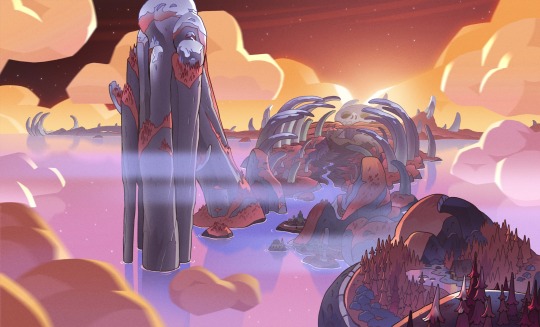
The same will occur if titans are killed. Even newborns can become small reefs or sea stacks. A titan’s bones will continue to grow even after death which leads to absolutely massive archipelagos and eco systems. Some land masses formed by titans include:
- the Boiling Isles [terrestrial titan] formed when an adult titan was struck down by immense magical force
- Jotunheim [aerial titan] the result of a titan warrior being strangled and impaled. Location of Titan Trapper Island
- Purgatory [aquatic titan] formed when an adult titan became trapped in shallow water after being injured in battle
- Archipeligo of Insanity [aerial titan] formed from the bones of a titan killed by a swarm of grimraptors, which are usually only pests
- Isle of Humiliation [terrestrial titan] the result of a young titan becoming impaled on sharp sea stacks. This is a more recent development and the individual was likely one of the few young survivors of the Titan/Archivist conflict.
GROWTH
Titans are able to create life from non-living things, most notably their own eggs. A titan will infuse their magic with a boulder which over time will form into an egg and embryo. Another examples would be the statues in Echoes of the Past.

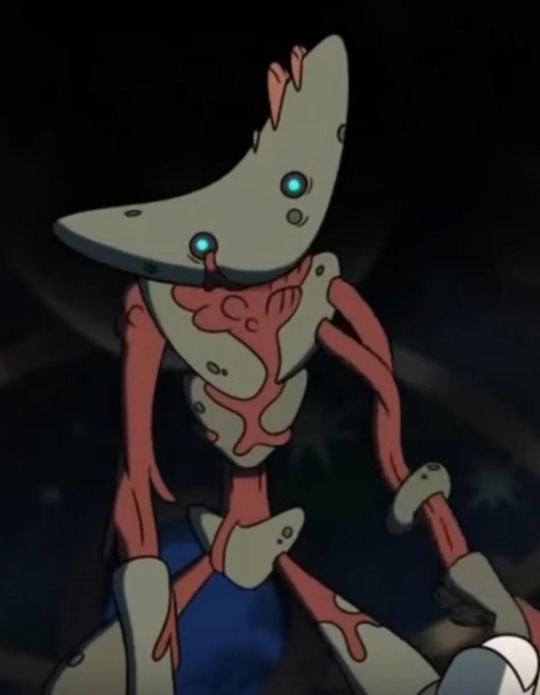
What makes titan eggs special is that they can hold off on hatching for hundreds of thousands of years, waiting for the perfect conditions. The hatchlings are as helpless as a newborn human and need constant supervision to not get hurt. They mature rather fast, with their growth slowing down around their teenage and adult years.
Titans are considered ‘pups’ until they reach adulthood. They are born with two straight horns that will expand and bend as they get older. For royal titans, the wings will come in during their years as a young adult.
POWERS
Instead of creating things out of thin air, titans warp the elements and world around them in the form of glyphs. Modern witch magic comes from this.
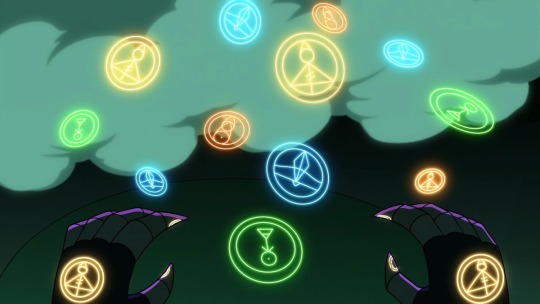

Each variant of titans has their own unique power.
Terrestrial - sonic shouts that explodes outward from their jaws
Aerial - searing fire breath that can melt most materials
Aquatic - inhaling tons of water at a speed that it creates violent whirlpools
All titans have blood that has fused with magic over millions of years of evolution. This blood is so potent with magic that it creates rips in reality if mixed with water.
Titans create life with their own bodies. Upon death, not only will they form land, but new, magical life will emerge from their blood.
CULTURE
Titans value art, specifically murals and sculpture. All throughout titan dens and palaces are marble carvings displaying the many life forms they share the planet with. Murals fill their hatcheries and rooms, and they have several festivals throughout the year to celebrate their creativity.

Will add more to this post as I think of it
#stardust and ivory#the owl house#toh au#toh#the owl house au#the collector#king toh#the titan toh#papa titan#sai info posts
69 notes
·
View notes
Text
Around a Cooking Pot
The first thing that Link learned after coming out of the Shrine of Resurrection was how alive the world was. Rolling hills and winding rivers greeted him, beating to the beat of his own heart as he adjusted to the blinding light outside the cave.
The second thing he learned was how to roast an apple over an open fire.
Quickly after that, cooking became second nature. He could coax a smile out of a sad friend with a fragrant mix of fish and butter, conspire with his friends in Kakariko Village after offering a couple pieces of honey candy, or boost his strength before a fight with the help of a meaty skewer.
He often got weary travelers to open up and share their stories over the soothing refrain of a simmering hearty soup, quietly delighting in the satisfied sighs of his unsuspecting guests as they tried a warm meal for the first time in days.
He once even made a cake for a Princess, who refused to share a piece even as she sniffled and stubbornly wiped tears from her eyes at the familiar taste of sweet berries mixed in a luscious rich cream in between layers of fluffy white sponge.
It was no surprise then, that when he set off on a journey with eight heroes of courage, he became the group’s official cook at the sight of the simple stew he made on their first evening together, camping on the forest of the Hero of Time’s era. Link often wondered how his brothers had survived their own adventures going on little else than hardtack, milk, and the occassional friendly monster teaching them the recipe for an unexpectedly delicious soup (which was more likely than one would think).
Sure, most of them had some frequent access to towns, merchants, or their own homes, but adventuring meant spending days at a time on their own, fighting hordes of monsters, exploring the most untouched parts of the land and crawling through long forgotten dungeons, and yet his brothers had been rather helpless around a cooking pot except for the most basic of recipes.
Now, the act of cooking was almost as nourishing as the food he prepared. The rancher had told him once, with a grin and a bump of his shoulders, that it looked like he was in a trance. And sure enough, once he really got into it, he felt as if he merely had to toss ingredients into a pot and watch them bounce, becoming meals in an instant as he hummed a little made-up song and lost track of everything around him. Of course, in reality cooking takes a lot more patience and care, and he likes to take the time to make every detail just right.
It had been almost three years since he separated from his brothers and stopped using the name “Wild”. As he sat around the fire making his new favorite recipe - one he hoped he could one day share with the men who had become his brothers - Link once again lost track of his surroundings, this time to the soft hum of a now familiar tune he had learned from the youngest hero on the team.
He sat on a trunk in a nameless island in the North Akkala Sky Archipelago - whoever named the Sky Islands had clearly gotten bored after the masterpiece of Lightcast Island - preparing a pizza, a brand new recipe he created with Koyin after helping her recover the recipe for cheese. The rancher had introduced him to cheese before, and he sometimes missed the soft, pillowy Ordon Goat Cheese, but the more fragrant version they made in Hateno melted perfectly over the disk of soft bread and thick, herby tomato sauce.
He had already tested a few different toppings to place on top of the pizza, trying to find the perfect companion for the savory cheese. Strips of roasted vegetables where a sensible option and offered a fair variety, but Link didn’t get to where he was by playing it safe. Today, he was testing thin slices of cured meat, and although the result was quite satisfying, he found himself wishing he had saved more of the sweet-and-tangy fruit that grew in the warm islands of the sailor’s world. The pineapples would complement nicely with the rich, fatty tones of the meat.
#listen#look at me in the eyes#there is no point to this#just my rambling thoughts#through Wild’s lens#linked universe#lu wild#totk#totk zelda#totk light dragon#pineapple pizza supremacy#fight me#ramblings#cw pineapple pizza
31 notes
·
View notes
Text
Fury species headcanons
Nightfurys
- the species is functionally extinct in the barbaric archipelago region, however the species still have strongholds from Norway and all the way down to North Africa specifically in the atlas mountains
-nightfury teeth are prized by dragon hunters as unlike other dragons, nightfury do not constantly replace their teeth. Only having two sets much like a person
- nightfury colonies are lead by the eldest mating pair which usually are the parents or grandparents of the rest of flock
- while they can manage fine in the colder weather, it's not uncommon to see nightfury go through torpor, huddling together in their caves until better conditions arrive. However if they have a steady diet like we see in toothless case they do not enter this state and can be active all year
- much like possums, baby nightfury cling on the backs of their parents
Lightfurys
- the elusive relative of the nightfury that's rarely seen due to their secretive nature but also their sea fairing lifestyle
- much like an albatross lightfury spend a significant amount of their life out in sea, blending in with the sky to avoid predatory dragons that might attack them from below as well go unseen by their fish prey
- unlike nightfurys, lightfury are solitary. Rarely making contact with members of their species under normal circumstances. Except during the mating season where they all join together in different island chains to find or reunite with their mate. As lightfury still mate for life much like nightfurys
- skrills are the active predators of the lightfury as the two often collide with one another out at sea
-Lightfury usually have around four eggs as it's common that half of a lightfury litter will not make it to adulthood
Nightlights
- before the great homecoming (the dragons being sent the hidden world) nightlights weren't really a common sight because of the conflicting behaviors of the parent species. However due to the unfavorable conditions of the hidden world, nightlight started to become a more common as the two species began to loose options leading to mass amounts of interbreeding. This collision of genetic diversity lead to nightlights having varying tailfins. This became even more apparent as nightlights started to breed with other related fury species
- while genetically nightlights are healthy and capable of creating offspring. The differences in biology eventually did lead to some side affects. While light and nightfurys breath out plasma. The methods in which they are created are different, with nightfury they have a special chemical sac that is later charged by the electricity stored in their bodies. Lightfury lack this organ leading to what see in thunder case where this missing organ resulted in their generation not being capable of producing plasma blast reverting back to a more " primitive" ability (that being electricity)
- nightlights inherited the lightfury instinctual fear of skrills along with the nightfury territorial behavior. Leading to a very dangerous combination of nightlights regularly attacking skrills when they enter their space. With this constant mobing, the two species formed a rivalry over territory that often leads to flock having to always find new homes
- nightlights come in different shapes and colors however the most common variants often are nightfury builds with black scales and white countershading
- nightlight tribes follow a mix of the parent species lifestyle. The flock is lead by the eldest members, with these units being formed by their family's. However unlike nightfurys, these flocks are usually very small with members of these family usually spreading out in the territory only gathering together during specific parts of the year or in case of a fight
#how to train your dragon#headcanon#night fury#httyd night light#light fury#httyd#httyd 3#httyd nine realms
60 notes
·
View notes
Text
Kh Worldbuilding headcanons: Destiny Islands Edition
No one ever talks about the original worlds in kh and i find that a travesty because these places are a really, REALLY good mine to play around with. (u can also use them or expand on them if you really like)
So im gonna share some HCs i have about the original kh worlds, starting with Destiny islands..... but before that some basics:
also this is kinda long so under the read more it goes
In general:
Kh "worlds" arent really floating in space. the stylized icons we see in game are more akin to dimensional rifts rather than actual planets (seriously who thinks this is how the world looks fr)
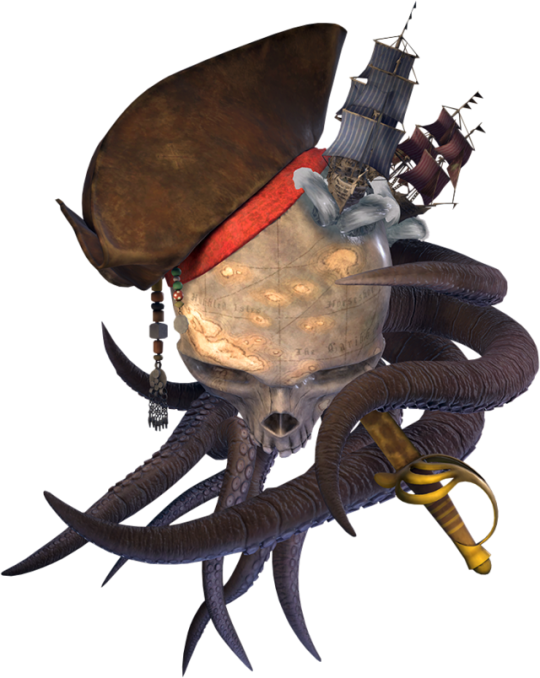
Following on with the dimensional rift: as the "worlds" arent really pieces of the original world, they are something more akin as parallel dimensions or something along the lines of something like ff14 (mostly because i would rather die first than live in a world with 5 different versions of britain existing at the same time)
As much as dark road is cool, the explanation for the empty worlds is dumb and for the purposes of this exercise, instead ofthe worlds filling the people gradually after it is created, i consider that the worlds as they exist are the result of the surviving children of the war making their stories real in the fractured reality of the original world (it also follows the weird theme of reality/unreality that kh4 seems to go for) and it turning into a different version of earth as we know it, with some exceptions, such as monstropolis (which exists independently as a parallel land to earth in its canon) and Deep space (which is straight up NOT earth and was more like, the rift of lilo and stitch's world pointing at the high counselor's fleet BEFORE the actual movie started) and also the OG worlds who dont have something to be based on for reasons to be explained later.
the only world that exists in the ocean between as it is, is the Keyblade graveyard. because it was so majorly fucked up by the war it both shattered in the physical and dimensional way after it happened.

Now that that rant is out of the way, LETS GO TO THE MOST UNDERRATED WORLD IN THE SERIES:

Destiny islands is in fact, more than 2 islands, being a big archipelago with a bigger "main island" where our three protagonists live at. this one we have seen before in kh2
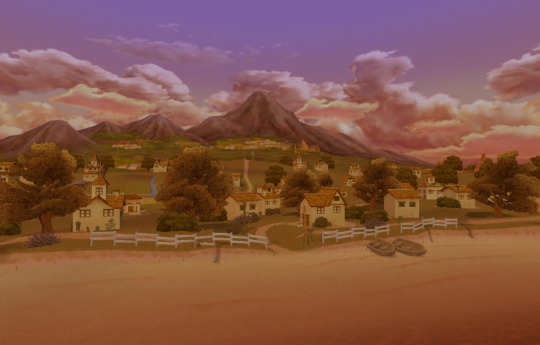
Destiny islands, is, by far, not the only chain of islands in the world. in fact, theres way more islands beyond the horizon.
We know the islands have a mayor, thus we know that they must have cordial diplomatic ties with different islands near them.
Due to FF characters existing here, i am very tempted to assure that some of the races from ff8 and ffX exist in this world (you are now imagining kimahri playing with a tiny kairi after diplomacy stuff with her dad just ended)
Due to DI being an original world, it is actually a shard of the original world that didnt really changed much compared to the other original ones. its major difference is that it is an ocean world like Wind waker hyrule or the Grand line from One piece
Magic is a real thing in the original worlds populace, you just really need to get good at it, learn it, be magical by default, or cheat and get a keyblade somehow
Religion in the og worlds strike me as something akin to the way people prayed to the aeons of yevon in ffx or the astrals of FF15. with people praying to the ff summons on a case by case basis and depending on their preference for patron gods.
Ie: Leviathan being a goddess of the ocean and water who is prayed to by sailors or fishermen, while scholars prefer ifrit using an interpretation of the fire of knowledge. (you know. like a furry prometheus that doesnt get eaten by an eagle daily)
I'll probably go on more detail later, but for now, the summons that get prayed to the most in DI is probably Leviathan for the aforementioned reasons, Ramuh for nature and agriculture reasons, shiva for tradition and combat reasons (related to riku in my particular headcanon) And Titan for economical reasons, wow alex making the rock man into the economy guy i wonder where you have heard it before
Speaking of economy, DI currency totally has tiny paopu fruit symbols in its coins and bills, and its a legal course currency in its neighboring islands because they too dig the paopu fruit symbolism
Munny looks like malleable diamonds because it probably just morphs into the appropate currency depending on the world we're in, moogles only use them as they are because they are both the people doing synthing and also shady as hell. do not trust the pompom people.
Going back to the Paopu fruit: its quite a common tree fruit in the islands and in fact is industrially harvested in some islands both as an export and in-island use.
The paopu folk story is actually mostly just a misconception for an older tale. originally involving sailors and a promise to return home safe. it eventually turned into "sharing one will entwine your fates forever"
Paopu pastries are a common dessert, and paopu wine is used often in weddings.
Monsters ARE real in the islands and roam the most inhabited places. These are often hunt for game and for safety reasons
THAT MEANS, chocobos are also a thing people use in the most rural parts of the islands for fieldwork, transportation and sometimes food.
Blitzball is MAD popular and they Often do tournaments involving several islands. DI itself was almost a perpetual champion up until jecht retired, then they win every so often instead of always
Boating licenses are a thing, but kids can still use their little boats because they have to row them. think like, the difference between a bicicle and a motorbike.
There are bridges for tram systems between islands that are close to each other, usually reinforced for sea and storm reasons.
Legally speaking, equal marriage is a thing and even polyamorous ones because why being an ass about it.
Healthcare is mostly public, but there are Specialty care stuff in the main islands that costs money because of course it is
Because sora and riku are japanese names, i prefer the island to be something like a tropical japan, so most of the people in DI have japanese names.
That would be all for now. tune in next time when i tackle on Twilight town, who may or not be in perpetual twilight (is not)
#kingdom hearts#Kingdom hearts headcanons#shoutout to the sorikai server peeps for enabling this madness#Destiny islands#Sora#Riku#Kairi#worldbuilding#Headcanons#Alex rants about stuff#Alex plays kh#sorikai#that one is tangentially related
41 notes
·
View notes
Text
A Thing Of Vikings Chapter 91: Ceremonies Of Light And Dark
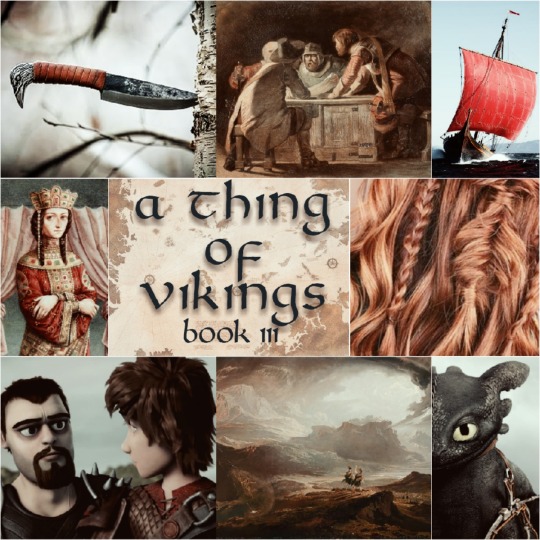
Chapter 91: Ceremonies Of Light And Dark
The "Species Problem" is the general term in the biological sciences for the difficulty in defining what a "species" is, with literally dozens of recognized methods and criteria for the definition of a "species." And in the context of this text, one of the more well-known examples—which has literally been known to start fist-fights among biologists of the author's acquaintance—is the question: are dragons one species, or many? (Note that first priming the biologists with strong drink or a lectern podium aids in achieving the desired results).
The issue with defining dragons as a species is that dragons are, both in their genetics and phenotypes, a "terrible mess," to quote Frelsifrædi, Haddock, Levi and Lewis in their seminal paper "Genetic Variety Of Worldwide Draconic Populations: Diversity And Bottlenecks" [Journal Of Genetic Studies, Summer, AD 1781]. Dragon genetics and populations resemble a river delta, with numerous braided tributaries and links of gene flow between different populations. In general, the archaeological record tells us that ancestral dragon population originated on Syndriland and migrated to the Javanese archipelago between 18 and 15 million years ago, where the numerous volcanoes and rich fishing waters of those island arcs helped define the dragon species' specializations as flying, fire-breathing semi-obligate piscivorous social animals who use geothermal hot spots as breeding sites.
However, genetic analysis shows that, even during those early days, dragons were already specializing into different forms that were still part of a larger population capable of interbreeding and gene flow. After leaving the Javanese islands and spreading out over the rest of the world, population isolation and mutation resulted in the creation of more breeds of dragon—but, like dogs, they are still generally capable of interbreeding with other members of their species. Generally. And here lies the headache of defining dragons as a singular species or as several distinct-but-closely-related species. Because where does one draw the lines for the distinctions?
To illustrate this, consider that there are a number of general parent categories of dragon, with the precise count depending on the schema used. The ancient Norse used a six-category system based on the dragon's general affinity (Stoker, Sharp, Boulder, Strike, Tidal and Mystery), a system which has survived to the present in various technical vestiges and common parlance. Other systems have been devised in the years since those days, many of them more accurate but also more technical, and we will be addressing those later in this text. But to use the familiar terms from the archaic system, generally speaking most Stoker-class dragons of the same size are capable of interbreeding and producing viable young. The same goes for most Boulder-class dragons and so forth. However, a Boulder-class and a Stoker-class might not be able to interbreed as successfully, although such crosses are known.
To quote Dr Susana Fyodorna, the leading dragon geneticist at the University of Kyiv, "It looks as if the dragon genome takes the feature sets from the parents, smashes them together, and sees if it explodes or not. Six limbs? Four limbs? Heptane or kerosene? Spawn it and see if the build works!" (Further note: Dr Fyodorna has a very potent left fist). And her statement is essentially accurate; if the genetic code proves viable then a dragon is hatched, possibly one with unique features. If the genes aren't viable, then the fetus might miscarry, with the most extreme examples resulting in the egg exploding in a manner similar to embryos with developmental defects.
In essence, the more similar two dragons are, the more likely they will be able to mate and produce viable offspring, but, to the frustration of biologists—and the amusement of their onlookers—this does not preclude successful matings and breeding between dissimilar dragons. And while there are populations which are so dissimilar that there are no records of successful crosses, a line still cannot be drawn around one population separating it from another as "one species," not when there is still gene flow. Yes, a Terrible Terror and a Bewilderbeast are certainly not capable of mating together, much less producing viable offspring… but the Terror can mate with breeds adjacent to it in size, as can the Bewilderbeast, and, via a dozen or more intermediary breeds, there can be gene flow between them—and drive the recording biologists to drink and pugilism.
The reigning theory at present is that most dragon breeds are simply specific sub-populations of the greater dragon species which have achieved self-sustaining population numbers, and as a result can find similar mates without too high a degree of consanguinity. Some of these populations have almost completely diverged from the greater species, such as the multi-headed breeds, where others, especially among the Strike-class dragons, have small populations and require regular interbreeding with other dragon breeds in order to avoid dangerous levels of inbreeding. Strike-class in particular have high rates of egg miscarriages due to this factor—the biological tolerances on their plasma-generating organ systems are simply so stringent that developmental disorders are nearly always fatal, but their numbers are often so small that they must mate with dragons from different breeds to avoid inbreeding, meaning that the parental differentials often have terminal results for the embryos.
—An Introduction To Dragon Biology, 17th Edition, Oxford University Press, 1793
AO3 Chapter Link
~~~
My Original Fiction | Original Fiction Patreon
20 notes
·
View notes
Text
Spec evo Vault, Shaggyfaced Snouter
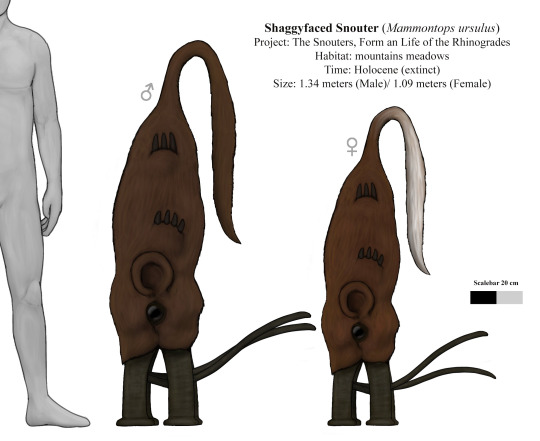
From the mountainous regions of one of the Hy-yi-yi islands, the Shaggyfaced Snouter was remarkable for being one of the largest rhinogrades ever, reaching more than a meter in height standing on their robust nasal appendages, which is a result of the lack of competitors they were the extreme of gigantism from this bizarre group of mammals.

These large pillar snout walkers inhabited the island of Mittuddinna located south east of the archipelago, it once belong to the clade of Hexarrhinida, but being relative of smaller flower mimic species and strange ambush ground dwelling sedentary creatures.

These magnificent creatures were found gathering in small groups headed by large males, followed by younger ones and females that using their silver tails are capable to provoke a response to the younger males. They were slow herbivores that feed on the roots of the plant Mammontopsisitos dauciradix.

73 notes
·
View notes
Photo
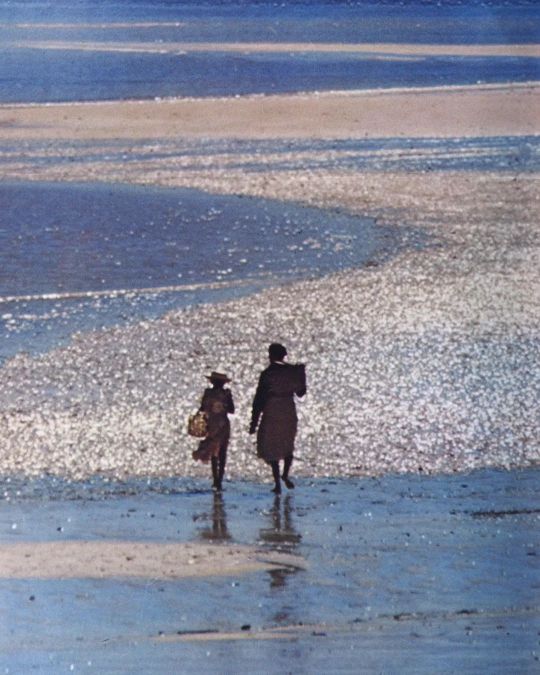
Coral reefs. An atoll in the Tuamotu Archipelago in the South Seas. Atolls result from the subsidence of an island. A shallow lagoon is formed in the centre of the ring- shaped reef, while on the outer side, the reef plunges steeply into deep water. Photo by Valerie Taylor. From "The coral seas; wonders and mysteries of underwater life" by Hans W. Fricke, 1973. https://www.instagram.com/p/Copx7BatFmB/?igshid=NGJjMDIxMWI=
149 notes
·
View notes
Text

modified map of the Empire of the Isles: elevation (land and sea), lakes, major cities, trade routes (red: heavy traffic, yellow: light traffic)
modifications explained below the cut
the main change, which prompted most of the other changes, is that i placed tyvia and morley on one tectonic plate, and gristol and serkonos on another.
i'm not a geologist and possibly there are other explanations to how the isles were formed, but my reasoning went thus: the temperature difference between the north of tyvia and the south of serkonos is too huge for a single archipelago -> the distance between them must correspond to something like that between finland and spain -> the isles are the size of a continent -> a continent, as far as i know, does not split apart unless through the movement of tectonic plates -> there is divergence happening
it could also have been convergence but wow that would mean so many more volcanoes. instead you get block rift mountains
the main tectonic rift is between tyvia+morley and gristol, as evidenced by the very deep chasm -- it's probably smaller in width than it should be, but i'm not going for full realistic accuracy either -- but there is also tectonic drift between tyvia and morley (according to the north american tectonic plate this is a thing that can happen, because that thing branches off in all kinds of directions. could it cause a continent to split on this small a scale? who knows. i'm pretending the answer is yes. can you tell already i just wanted to go hog wild on the tectonic plates) and there are convergent plates above tyvia and below serkonos
CONSEQUENCES: volcanoes volcanoes volcanoes (and fault block mountains)
now serkonos is half dormant volcanoes, half huge old magma flow from a massive volcanic event at some point in the distant past; tyvia has a volcanic arc as its northmost feature but it's partly calderas; the south of tyvia and the north of gristol is very mountainous (but the area between gristol and morley isn't because the tectonic forces along that axis are transformed [dunno if that's the proper term, basically lateral] rather than divergent
does this also mean there are probably earthquakes everywhere? yes. oh god
OTHER FEATURES: a couple of meteor craters (the shapes were already there, i just decided they would be craters) east of baleton and west of caltan; a void rift deep in the ocean right near whitecliff, pulling in the landmass around it; minor modifications to certain outline areas because i added in mountains. i like mountains. they make things less flat. OH and this was already present in the canon map but the line of islands east of gristol is now a bunch of extinct volcanoes formed as the result of a hotspot at the morley-gristol tectonic limit, now closed; and i just fully deleted an island west of gristol for the hell of it. also the lakes were either already there, or hadn't been colored in right on the canon map, or were Very Weird Interconnecting Rivers i decided to fill in because why not
TRADE ROUTES. obviously all capitals would be trade centers, or at least trade-rich considering their population level, but i've decided several other cities are either merchant towns for reasons such as being nearest to another isle, being conveniently placed to connect to many other cities and thus either the center of trade (like yaro or driscol) or a waypoint (like caltan), or being an exporter of stuff and conveniently placed right on a trade route thus favoring its development (like potterstead, but that's entirely my personal fanon)
some trade routes are heavily used because they lead to many ports of interest, or because they lead to a major port, or because it's the only way to get to a certain major port efficiently (for example, the trade routes to the east of serkonos are little used because if you leave from karnaca you have to get all the way around the trail of volcanic islands, can't dock at whitecliff directly because, see name, it's on a huge cliff, then avoid the dishonored bermuda's triangle [void rift, huge myths around that place, few people risk going through there], then get all the way up to driscol); the heavily trafficked trade route that stops right at the top of serkonos actually leads to the serkonan canal, which isn't even present on the canon map (probs because they hadn't invented it yet when they drew the thing), and is a much faster way of getting to karnaca, but deep-keel boats can't take the canal and series of waterlocks and have to go around the old way; wei-ghon does a lot of trade because it needs to to support its population way in the north, and a lot of tyvian trade goes by boat due to the poor travel conditions inland and the huge fuckoff mountains
not pictured: trade routes to pandyssia
312 notes
·
View notes
Text
the internet diverges again
(if you're a regular Garbage Day reader, a lot of this may sound very familiar to you, as i'm borrowing heavily from conclusions Ryan keeps drawing as well. my thoughts below are my own, and kinda rambling because i don't really have any strong conclusions yet, just speculation that keeps me up at night.)
feels to me like the internet is diverging yet again, into two primary modes of user experience:
the new FM radio. this is what TikTok is, and YouTube has been for a long time. it's massive, it's impossible to ingest all of it or even a fraction of it, and it moves so fast that the vast majority of people can be nothing but passive consumers. it's a lean-back, wayyy back, experience on these platforms. the key difference today, from actual FM radio, is how much the experience is personalized and molds itself in real time to you as the consumer. more and more people want to tune out of the active social media model and into the hyper-passive radio model. you don't have to even follow anybody, the content comes to you, just like the radio. sit back, relax, swipe up, watch, keep swiping, the next piece of content will be more suited to you than the last, head empty no thoughts.
the archipelago. this is what Discord is, and what Reddit subreddits are, and what Substack newsletters are, and Minecraft servers, and why people gravitate towards them. people do still want a sense of belonging, and we've all agreed lately that such a thing is way too much work on the slightly-customizable-algo-feeds of Twitter or Facebook. this is a polar opposite of the new FM radio model above, because this archipelago requires deep commitment, buy-in, and time investment. and the islands are inherently getting smaller and smaller and smaller and more nostalgic and like the message boards of the 00s. the key point being that they're independent, separate, and feel owned and controlled by their inhabitants. there can't/won't be an index of them.
i think these two paths are in stark contrast with what the predominant UX model has been over the last 15 years, which is that slightly-customizable centralized walled garden algorithmic feed that is what Twitter, Facebook, and Instagram have been perfecting, and is now wholly inadequate. and those platforms keep trying to compete with TikTok, but in the wrong way. it's not about video, nor even the infinite feed, it's about the extremes of ownership and depth of involvement.
in this new context, the traditional walled garden feeds now feel like work with little reward, and TikTok doesn't feel like work at all, with lots of reward. Discord feels like deliberate work with reward. it's those different patterns of passive and active reward that feel so disrupted by TikTok, which is not a UI feature, it's the whole thing. you can't just slap a feed of recommended videos into Instagram and get the same result, now that we consumers are all more wise to it.
i'm somewhat excited about this shift because underneath these new-but-old paradigms are important shifts in our relationship to the products and our actual ownership of them. Discord relies on subscription money, not ads; they survey paying users to figure out what to build next, and it seems to work at scale and make people feel like they really own their servers. TikTok runs ads the way radio runs ads, except far more deeply personalized, because they have the mount everest of attention data (which is not the same as Facebook's relational targeting data). it's very clear that you own nothing on TikTok or YouTube, you're just a passively floating leaf in an ocean of content.
i'm also excited about this shift because it means we're in fertile territory for products, both new and existing, to figure out where they belong and if they can adapt. TikTok and Discord feel like the two opposite axis points to me, in terms of product ownership, anonymity, tracking behavior, attention economy, etc. if both worlds are feasibly sustainable, then that's great news for those of us who want to cultivate safer, smaller places to coexist on the internet. there is a whole spectrum of possibility to explore here and lean into. it comes with a myriad of new problems, but arguably, we never figured out a lot of the core problems with the old model anyway, so what's it worth?
no conclusions here, just a lot of thoughts.
246 notes
·
View notes
Text
Seven-Fold Sea Periphery: Scale Islands Archaeological Site Findings
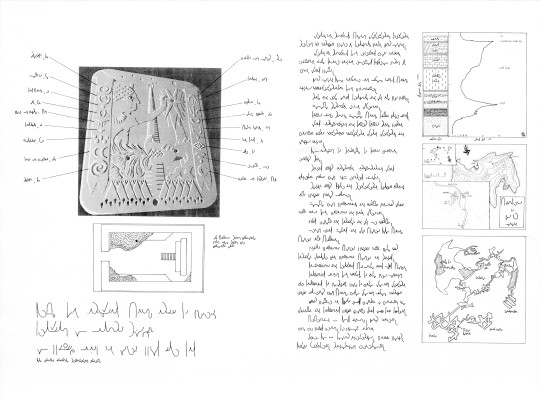
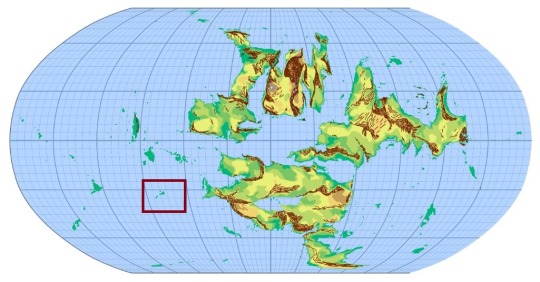
On top is the full extent of the document, closer copies and more detailed explanations to follow
Below is a world map, outlining the location of the Scale Islands with a dark red box
Located on the southeastern edge of the Seven-Fold Sea phenomena, the Scale Islands are an archipelago of space-originating islands formed of fragments broken off of the First Bright Moon, having gradually accumulated thick limestone beds in the lowlands during the last period of major sea rise.

A map of the Scale Islands
The lunar rock found in the islands has long been prized as a building material, with quarrying evident from the time of the first Hurricane-Engine City Ships, with temples constructed from the material present from the Salt region to the Crust region.


On the left, the rock type by depth of the archaeological dig, with the corresponding energy levels recorded by depth to their right.
On the right, the Island of Baltora, with an inset map showing the location of the archaeological dig.
The islands have been of note in recent years due to the discovery of an array of large-scale cave systems deep below sea level of a similar type as the long known lower reaches of the Bunker region. Evidence of human cohabitation dating back to the early Xerranian period is present in some of these caves, having remained untouched since then as opposed to the still currently inhabited caves in the Bunker region.
The particular site was discovered through drilling undertaken in a quarry in the east of the Island of Baltora.

The known extent of Baltora's Lunar cave system, with the entrance present in a small cave to the left of the largest chamber indicated by a +▵
The site of the discovered mural is indicated by a small star in the bottom roughly hexagonal segment
Preliminary examination of the inhabited sections of the cave have proven fruitful, with recent advancements in the Neon regions image capture technology having cut down energy costs to the point images can be captured without large, heavy infrastructure, and without the resulting energy output scouring all spirit/energy traces which can be useful for anthropological studies.

A sketch of the room containing the mural, with the location the image was taken indicated by a small star
The mural (10.8m Tall by 8m Wide) appears to show a draconic being and a humanoid towering above mountains and forests, with a stairway leading up to a large circular structure (presumably the moon) visually continuing the stairway up to the mural. Holes in the base of the mural appear to have been used to hold scrolls, while indents in the figures and patterns likely were meant for gems.

The photo of the mural, with annotation attempting to translate the symbols on the engraved scrolls to the left and right
A translation of the main body text from the Linear script into English has been provided below, any more specific translations will be provided by request.
Image taken during the year 927 expedition into the newly discovered macro-scale cave system located in the Scale Islands using a low energy grayscale LightCord camera isolated within a hooded pouch laced with silver to prevent energy contamination of the site.
The Scale Islands are known to originate from chunks of the first moon which fell from orbit several million years ago in planetary time, experiencing a crash consistent with stellar bodies, exhibiting little gravitational attraction and lacking mechanical failure upon impact.
The mural was found in the southern edge of the cave system, in an area identified as having human habitation. The chamber itself is notably formed of fossil space, an unusual anomaly considering the freestanding voids of the other constructed caverns in the area.
Wax placed along the left and right sides of the chamber formed out of an unknown plant based material, this wax contains Energy traces which date the last major residence of the site roughly 45000 years ago in local time. The date cannot be identified more precisely, as the material's energy decay rate is unknown.
The mural's ordered spirit is well formed, having very little intention pollution which occurs in public facing facilities. The intent of the mural's creator was preserved through the period the site was in use, suffering less than 10% pollution.
The chamber has partially collapsed near the opening on both sides, with dust stranding in the air above the rubble piles typical of a natural collapse rebound of a pocket of fossil space. Residual corrosive residue on the rock near the entrance clued in researchers to the rooms existence, appearing to have been the result of the hinges and locks of a doorway.
Small degrees of mechanical erosion of the rock in its early period is evident in the intent pollution experienced by the murals spirit, likely from cleaning the soot created by the candles off of the surface.
Chemical damage to the mural was caused by seawater intrusion into the chamber through the caves connections with the overlying limestone rock, the resulting erosion occurred in a low energy environment. This damage was not repaired until the high energy seas of the Abyss era, magnifying the spirits repair of the mural, resulting in the current murals rounded features.
Translations completed in concert with the people's of the island chain, along with the older translation work completed by the L'emmerak expedition of early y200, as the symbol base discovered in the Bunker region Lunar Caves dates back to the same region.
Direct influence by Miss Ziava-Ossan is unlikely, but cannot be ruled out during translation, none of their signature Pitch Black energy was captured by the candle-wax within the room at the time the image was taken.
Contributing Authors: Nessen Ralynoh, Ialm Chiroha, Parruh and Lakkan Collu, Geissec Harzui.
Citations: T. Iyottumaya, K. Keke'ralm, G. Vadizoa, M. Porovska, L'emmerak
#conlang#map#fantasy maps#anthropology#fantasy anthropology#fantasy map#I haven't posted in a bit so I forgor my tagging systems 😔#also a fun detail - you can probably translate the symbols on the mural from another of the conlang's I've posted about on this blog#sadly this project is slightly unfinished since I did it for an art class#so I had a specific time limit ¯\_(ツ)_/¯
18 notes
·
View notes